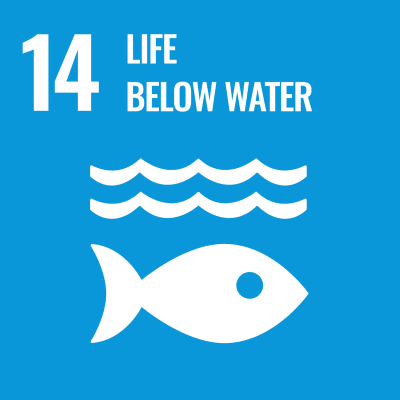-
Faculty of Engineering, Department of Architecture
- Professor
- Fuminori HIRAYAMA
- Research Field
Architectural Design
- Keyword(s)
user participation design, user evaluation,workshop, public cultural facilities
- Research theme
-
- User Evaluation of Public Cultural Facilities
- Analysis of user opinions and verification of effectiveness of user participation design
- Functional changes in public cultural facilities
Outline of research activities

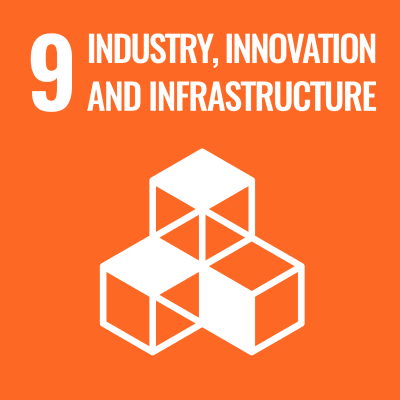
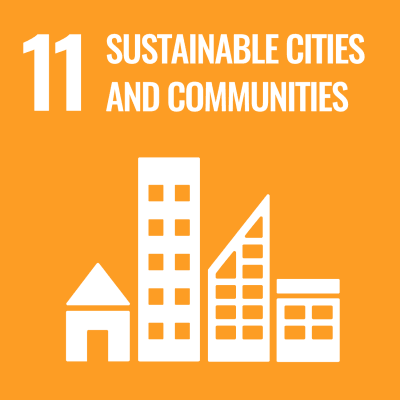


In the design of public cultural facilities, there are an increasing number of examples of design methods that incorporate the users’ ideas at the architectural design stage in order to promote active use.
Our laboratory has collected 70 cases of participatory design from all over Japan. The following participatory design practices were implemented in our laboratory, and the effectiveness of participatory design was verified through analysis of user opinions and post-completion evaluations of these practices.
・Kudamatsu City Community Exchange Center (2013)
・Okayama Prefectural Doctor’s Hall (2015)
・Sanagouchi Village Office (2017)
・Kashiwa City Southern Neighborhood Center (2018)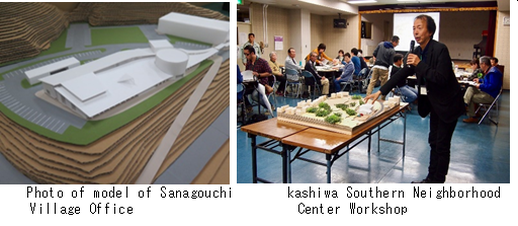
- Desired cooperation
-
- Public facility planning and design
- User-participatory design practices
- User evaluation analysis of public facilities
-
Faculty of Engineering, Department of Architecture
- Professor
- Hiroyuki HOTTA
- Research Field
Foundation Engineering, Geotechnical Engineering, Disaster Engineering
- Keyword(s)
Foundation, Ground, Performance Evaluation, Disaster Survey
- Research theme
-
- Deformation of ground and structures during construction and usage of buildings
- Performance evaluation and reuse of existing piles
- Disaster survey and analysis of buildings and foundations
Outline of research activities



In order to ensure safety during construction and to assure quality and performance of buildings, I am conducting research on methods to predict and to evaluate deformation of ground and structures accurately.
Also, to reduce cost, period, and environmental load of re-building, I am researching survey or evaluation methods of existing piles and foundation design reusing them.
In case of disasters such as earthquakes or heavy rains, I quickly survey on site, analyse the cause of damage, and utilise the results for subsequent disaster prevention and mitigation.
- Desired cooperation
-
- Rationalisation of foundation design and underground construction
- Disaster survey and diagnosis, restoration and reconstruction plan
- Research on optimization methods in the life cycle of buildings
-
Faculty of Engineering, Department of Architecture
- Professor
- Keiji NAKANISHI
- Research Field
Eathquake-Resistant Structure, Antiseismic Reinforcement
- Keyword(s)
Reinforced concrete,Steel structure,Steel-reinforced concrete,Base isolation structure,Seismic control design, Antiseismic reinforcement,Optimum design
- Research theme
-
- Tublar truss structure in steel
- Wooden grid wall
- Base isolation and seismic control design
Outline of research activities



My spetial field of study is earthquake resistant structure. The way of my study is at first understanding of destruction mode and strength of structure by experiment , and next establishing design method by simulating the experimental results by analysis.
In 2015 I took up my new post of professor of Okayama University of Science, I was beginning of study of Tublar truss structure in steel with locally company. And in 2016 I was beginning study of Base isolation structure and Seismic controle structure by using the small vibration table.
I am planning to study of new structure of minimizing damage under large eathquake expected in the near future.
- Desired cooperation
-
- Experimental study of Reinfoced concrete,Steel structure.
- Experimental study of Base isolation structure.
- Analytical study of Optimum design.
-
Faculty of Information Science and Engineering, Department of Information Science and Engineering
- Professor
- Shinji MIYAKE
- Research Field
Learning support system, Software engineering
- Keyword(s)
Learning support system, Understanding, Awareness
- Research theme
-
- Learning support system for algorithms and programming
Outline of research activities


Even if you think you understand it, if you look at it from a different perspective, you may find some unclear points.
We are researching the construction of an easy-to-understand learning system that makes difficult-to-understand teaching materials easier to handle, encourages confirmation from multiple perspectives, and is easy to understand.
Based on conventional CAI and e-learning methods, we aim to build and release learning support systems such as algorithms and programming.
We are also researching a system that presents answers to simple puzzles in order to cultivate logical thinking.- Desired cooperation
-
- Algorithm, programming education support
-
Faculty of Information Science and Engineering, Department of Information Science and Engineering
- Professor
- Toshiyuki KOHNO
- Research Field
Numerical Analysis / Utilization of ICT in Education
- Keyword(s)
Linear system, Preoconditioning, Iterative method / ICT
- Research theme
-
- Improvements in the linear iterative algorithm
- Parallel iterative method for large sparse linear equation
- Improvement of distance learning using ICT
Outline of research activities

(Numerical analysis)In scientific computing most computational time is spent in solving systems of linear equations. It is necessary to study an algorithm for solving the large linear system fast and stably. We have proposed several new iterative algorithms and preconditioning techniques.

Vertical axis is the number of iterations, horizontal axis is the index of residual vector, and we display the magnitude of the residual vector in the color. When this becomes black beyond the red, the error becomes large and when this becomes white beyond the yellow, the error becomes small.
(ICT)Distance learning is a way of learning remotely without being in regular face-to-face contact with a teacher in the classroom. We study the support system for the programming lecture in distance learning.- Desired cooperation
-
- Approach to solving the large linear system.
- Improvement of education with using ICT
-
Faculty of Information Science and Engineering, Department of Information Science and Engineering
- Associate professor
- Wataru KOBAYASHI
- Research Field
Control, Rehabilitation, System Engineering, Fluid mechanics
- Keyword(s)
Fluid Power System, Rehabilitation, Life Support System, Green Drive Source
- Research theme
-
- Control of tap-water drive artificial muscles
- Assist orthosis for under-water gait training
- Pure tap-water drive system for emergency drive source
- Support systems for musical instruments
Outline of research activities


Water hydraulic systems which use tap-water as working fluid are called aqua drive systems and they can realize novel green drive sources with 100% oil-free characteristics. In our laboratory, we study to realize a clean and safe system for rehabilitation, power assist, and life support. In addition, we have developed pure aqua drive systems, which can be driven without any power source, by controlling fluidic flow and have applied such systems to emergency drive sources and disaster prevention systems. We have also developed support systems to play musical instruments by only one hand.

- Desired cooperation
-
- Application of aqua drive systems for rehabilitation and life support systems
- Development of emergency drive source and disaster prevention systems using pure aqua drive systems
- Development of support systems for musical instruments
-
Faculty of Information Science and Engineering, Department of Information Science and Engineering
- Lecturer
- Masashi YOKOTA
- Research Field
Robotics, Control engineering, Mechatronics
- Keyword(s)
Mechatronics control device, Power assist device, MPU
- Research theme
-
- Development of Non-Wearing Type Power Assist Device
- Development of Control System for Two-Wheel Drive Electric Motorcycle
- Development of Guidance System for Mobile Robots Using Ceiling Cameras
Outline of research activities
In this study, various mechatronics devices and control systems with pneumatic and electric actuators such as non-wearing type power assist devices, electric motorcycles, and mobile robots were developed based on MPU (embedded controller) and RTAI. The tested power assist device was attached a subject and the muscle burden was evaluated by using myoelectric sensors and a musculoskeletal simulator. In addition, in the study of electric motorcycles and mobile robots, these control systems were designed based on the analytical simulation. Through these studies, I’m going to submit papers and give presentations in domestic/international conferences.

- Desired cooperation
-
- Development and evaluation of power assist devices
- Development and evaluation of mechatronics control devices.
- Development and evaluation of control systems, etc.
-
Faculty of Life Science, Department of Bioscience
- Professor
- Ken-ichiro HAYASHI
- Research Field
Agrochemistry, Plant Science, Chemical Biology
- Keyword(s)
Plant hormone, auxin, Plant growth regulator
- Research theme
-
- Metabolic pathway of plant hormone auxin.
- Design and synthesis of auxin derivatives
- Development of plant growth regulator
Outline of research activities


We have been working on the mechanism of inactivation of the plant hormone auxin. In one of our research projects, we have discovered potent plant growth regulator, designated as KAKEIMIDE, which is a potent inhibitor of the GH3 enzyme that inactivate auxin. Auxin degradation inhibitor in plants can regulate auxin levels in various plant species, including crops, and thus promote rooting of cuttings and fruit set and enlargement of fruits.

- Desired cooperation
-
- Synthesis and evaluation of plant growth regulator
-
Faculty of Life Science, Department of Bioscience
- Professor
- Koji MATSUURA
- Research Field
Physiology, Microfluidics,Assisted Reproductive Technology (ART)
- Keyword(s)
Sperm selection, Early embryo cluture, Mechanobiology
- Research theme
-
- Paper-based devices for sperm motility analysis (See below)
- Development of dynamic embryo culture systems
- Energy metabolism in mammalian sperms
- Microfluidic cell separation
Outline of research activities

We have demonstrated an inexpensive and easy-to-handle device for monitoring mammalian sperm motility made by patterning a piece of paper and measuring the activity of a specific enzyme. After applying semen to the hydrophilic center circle of the patterned paper, a tetrazolium-based colorimetric assay data can be used to help estimate the percentage of motile human sperm (sperm motility) in semen based on the character that motile human sperm moved in and on the paper.
(Matsuura et al. 2014, 2017, 2019)
- Desired cooperation
-
- Clinical application of developed microfluidic devices for ART Mulicenter clinical studies
- Microfluidic device application for cell handling
-
Faculty of Life Science, Department of Bioscience
- Professor
- Masayuki HARAMURA
- Research Field
Mdicinal & Bioorganic Chemistry, Chemical Biology
- Keyword(s)
Peptide Chemistry, Chemical Proteomics
- Research theme
-
- Design and synthesis of bioactive organic molecules.
- Development of a method for analyzing intermolecular interaction between proteins and bioactive small molecules.
Outline of research activities


・Peptide-based drug design and synthesis:
Design and synthesis of bioactive small molecules from peptide hormons and proteins based on structure activity relationships.
・Chemical Biology Research:
Development of a method for discovery of novel drug target protein using small bioactive compounds as the probes.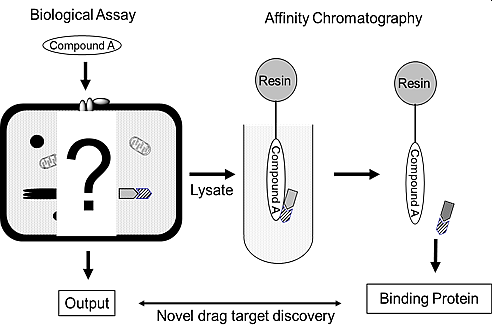
- Desired cooperation
-
- Peptide based drug design and symthesis
- Discovery of novel drug target protein of small bioactive compounds
-
Faculty of Life Science, Department of Bioscience
- Professor
- Motonao NAKAMURA
- Research Field
Cellular signaling, G protein coupled receptor (GPCR)
- Keyword(s)
receptor, GPCR, signal transduction, molecular biology
- Research theme
-
- Functional studies on the desease-related GPCRs
- Development of novel ligands for target GPCRs
- Fundamental study on the GPCR biology
Outline of research activities

G protein-coupled receptors (GPCRs) utilize complex cellular systems to respond to diverse ligand concentration. Our recent work elucidated that this system functions through the phosphorylation status. Thus, we have been studing on the potential roles of this modification for the GPCR signaling. In addition, we are developping the novel ligands for desease-reated GPCRs to regulate. We hope that our studies provide an expanding conceptual view of the drug development for the regulation of GPCRs.

- Desired cooperation
-
- Screening and development of bioactive ligands for GPCRs
-
Faculty of Life Science, Department of Bioscience
- Professor
- Ryoji MITSUI
- Research Field
Applied Microbiology, Food Microbiology, Applied Enzymology, Microbial Ecology
- Keyword(s)
Symbiotic microorganisms, Enterobacterial metabolites, Fermented foods, Functional food materials
- Research theme
-
- Analysis of the plant growth-promoting effects of bacteria symbiotically associated with plant Leaves.
- Metabolism of food components by enterobacteria and its applications
- Research to extend the shelf life of food by controlling microbial growth
- Development of industrially applicable microorganisms and microbial enzymes for the production of fine chemicals
Outline of research activities



In our laboratory, we explore the untapped potential of microorganisms that play important roles in agriculture, food processing, and human health, both inside and outside our bodies. Our goal is to discover useful microorganisms with novel abilities and develop technologies to enrich our lives sustainably.

- Desired cooperation
-
- Screening of useful microorganisms and their utilization.
-
Faculty of Life Science, Department of Bioscience
- Associate professor
- Atsuhito KUBOKI
- Research Field
Synthetic organic Chemistry, Bioorganic chemistry
- Keyword(s)
Organic reaction, Enzymatic reaction, Bioactive compound
- Research theme
-
- Development of Development of new synthetic methodologies of ο-quinones
- Studies on chemo-enzymatic processes for fine chemicals
Outline of research activities



Our group is interested in developing new synthetic methodologies to enable synthesis of biologically active natural compounds and their derivatives in environmental friendly manner. As such manners, we have developed metal-free regioselective cycloaddition of highly reactive o-quinone to form 1,4-benzodioxane and a procedure for construction of benzene ring from o-quinone and terminal alkynes through cycloaddition and photo-decarboxylation. We have also reported concise synthetic route to KDO, a kind of carbohydrate, including elimination of cyclic sulfite as a key step. By collaborative research with a company, functional monomers for dental adhesive resin cements have been developed.

- Desired cooperation
-
- Development of fine chemicals by analogue synthesis
- Partial modification of lead compound
-
Faculty of Life Science, Department of Bioscience
- Associate professor
- Midori FUTAMI
- Research Field
Protein engineering
- Keyword(s)
Protein chemistry, Funactional regulation of mammalian cells, Blood purification
- Research theme
-
- Artificial regulation of mammalian cells by protein transduction technology.
- Development of plasma adsorption column using protein ligand.
Outline of research activities

Denatired protein forms insoluble aggrigate. Chemical cationization of decatured protein s them water soluble. Based on this protein cationization method, we have studied two theme as described later. Left panel shows the outline of cationized protein transduction for living mammalian cells。Cationized protein efficiently adosorbed to negatively charged cell surface and uptaked by endocytosis. Right panel shows application of cationized protein for adosorbent of autoantibody. Denatured and cationized whole antigen immobilized on adsorber would be possible to capture antibodies with various epitope.

- Desired cooperation
-
- Production of recombinant protein by the host of E.coli or mammalian cell.
- Protein analysis.
- Mammalian cell regulation.
- Development of plasma adsorption column using protein ligand.
-
Faculty of Life Science, Department of Medical Technology
- Professor
- Ken KATAOKA
- Research Field
Cell Biology, Regenerative Medicine
- Keyword(s)
Cell Culture, 3D culture, Spheroids
- Research theme
-
- 3D culture of tissue stem cells
- Artificial control of spheroid formation
- Assessment system of cell culture techniques
Outline of research activities

Epithelial cells in spheroids formed through three-dimensional culture exhibit a quiescent state. Our research aims artificial interventions to control cell proliferation and differentiation during spheroid formation. Additionally, aiming for the standardization of cell culture techniques, we are advancing the development of a assessment system utilizing recorded videos.

- Desired cooperation
-
- Assessment system of cell culture techniques
-
Faculty of Life Science, Department of Medical Technology
- Professor
- Takayoshi KIBA
- Research Field
Gastroenterology, Oncology
- Keyword(s)
Visceral organs, Regeneration, Proliferation, Carcinogenesis
- Research theme
-
- Identification of new nerve-delivered growth factor regarding pancreatic B cells.
Outline of research activities

We found that vagal hyperactivity produced by ventromedial hypothalamic (VMH) lesions stimulated cell proliferation of rat pancreatic islet B through a cholinergic receptor mechanism. Previously, we developed a new technique regarding high-quality RNA extraction from rat pancreas for cDNA microarray analysis, and thereby, we found that VMH lesions may change the expression of cell proliferation-related genes and neuron-related genes in a rat pancreas, using DNA microarray and real-time polymerase chain reaction. We believes that these new gene network analysis will lead to Diabetes MellitusTreatment or Pancreatic Cancer.

- Desired cooperation
-
- R & D regarding regeneration and proliferation of pancreatic B cells
-
Faculty of Life Science, Department of Medical Technology
- Associate professor
- Daiki OUSAKA
- Research Field
Pharmacology, Cardiovascular Surgery, Biomedical Information Science
- Keyword(s)
Genome Editing, Zebrafish, Blood Products, Data Science, Diamond-like Carbon
- Research theme
-
- Drug discovery and disease target molecule identification using a combination of Data Science × Genome Editing (CRISPR) × Zebrafish
- Development of biosensors for real-time sensing of biomolecules in vivo
- Development of medical coatings utilizing carbon-based thin films
- Technology development for ensuring the health and safety of agricultural workers
Outline of research activities


・Drug Discovery and Target Identification
Human plasma contains over 3,000 proteins, yet less than 20 are used in current blood products. To discover novel therapeutic candidates, we integrate Data Science, CRISPR-based genome editing, and zebrafish models—focusing on neurological diseases and congenital heart defects.・Medical Coating Development
Medical devices such as catheters and artificial blood vessels require high biocompatibility and antimicrobial properties. We are developing novel coatings using patented Diamond-like Carbon (DLC) technology, aiming for improved safety, tissue regeneration, and real-time biosensing functionality.・Health and Safety in Agriculture
Agricultural workers face a significantly higher risk of fatal accidents. Our work focuses on long-term health monitoring and accident prevention, using data-driven approaches and bio-design strategies in collaboration with industry, academia, and government.- Desired cooperation
-
- Life science research utilizing zebrafish
- Development of biosensors for real-time sensing of biomolecules in vivo
- Technology development to support health and safety management of agricultural workers (e.g., systems for heatstroke prevention, accident mitigation, and behavior modification)
-
Faculty of Biosphere - Geosphere Science, Department of Biosphere - Geosphere Science
- Professor
- Takeharu SATO
- Research Field
Disaster prevention meteorology
- Keyword(s)
Sediment disaster, Rainfall
- Research theme
-
- Development of landslide disaster prediction technology
- Development of risk evaluation technology of landslide disaster
Outline of research activities



We have to evaluate the occurrence prediction and disaster occurrence risk of landslides from inspection data. We analyze the trend of the past of the disaster, to assess whether the “when” “where” landslide disaster occurs, we are working to hazard maps.
These results are considered useful in a safe life.
- Desired cooperation
-
- Construction consultant
- Disaster-prevention measures
-
Faculty of Biosphere - Geosphere Science, Department of Biosphere - Geosphere Science
- Professor
- Yousuke NOUMI
- Research Field
Geology,Geomorphology,Geoinformatics
- Keyword(s)
Granite,Rock Generation,Strata,Geomorphology,DEM,GIS
- Research theme
-
- Study on generation and emplacement of felsic magma such as granite
- Study on formation of strata and rocks distributed in Okayama Pref.
- Cultural geological study on various stone materials
Outline of research activities

Our laboratory conducts petrological research on granites widely distributed in southwestern Japan, using fieldwork as the main means of study. In addition to granite, we also reserch to tuffs and basic igneous rocks. Informatics technics, such as GIS are used in study. In addition, granite weathering, landform formation, stone material utilization, etc. are being studied.

- Desired cooperation
-
- Investigation and research on geology and topography in Okayama Prefecture
- Research on the use of GIS with a focus on topographical analysis
- Cultural geological research on stone materials
-
Faculty of Biosphere - Geosphere Science, Department of Biosphere - Geosphere Science
- Associate professor
- Mitsuhiko HONDA
- Research Field
Observational Astronomy, Planet Formation
- Keyword(s)
Protoplanetary disk, Instrument development
- Research theme
-
- Observation of protoplanetary disk
- Observation of Solar system minor bodies (comets)
- Development of new astronomical instrument and method
Outline of research activities


How the earth and planets are formed ?
I’m trying to answer this question by observing protoplanetary disks, which is the on-going planet forming site around young stars. Current large telescopes such as Subaru telescope allow us to reaveal the detailed signature of the planet formation process in the protoplanetary disks.
In addition, I’m also involved with the new development of the astronomical instrument and methed.
(Left) Artist’s illustration of the protoplanetary disk around HD142527 star
(Right) Detection of olivine and pyroxene crystals around Hen3-600A star- Desired cooperation
-
- Research on planet formation
- Research on Solar system minor bodies
- Development of new astronomical instrument and method




